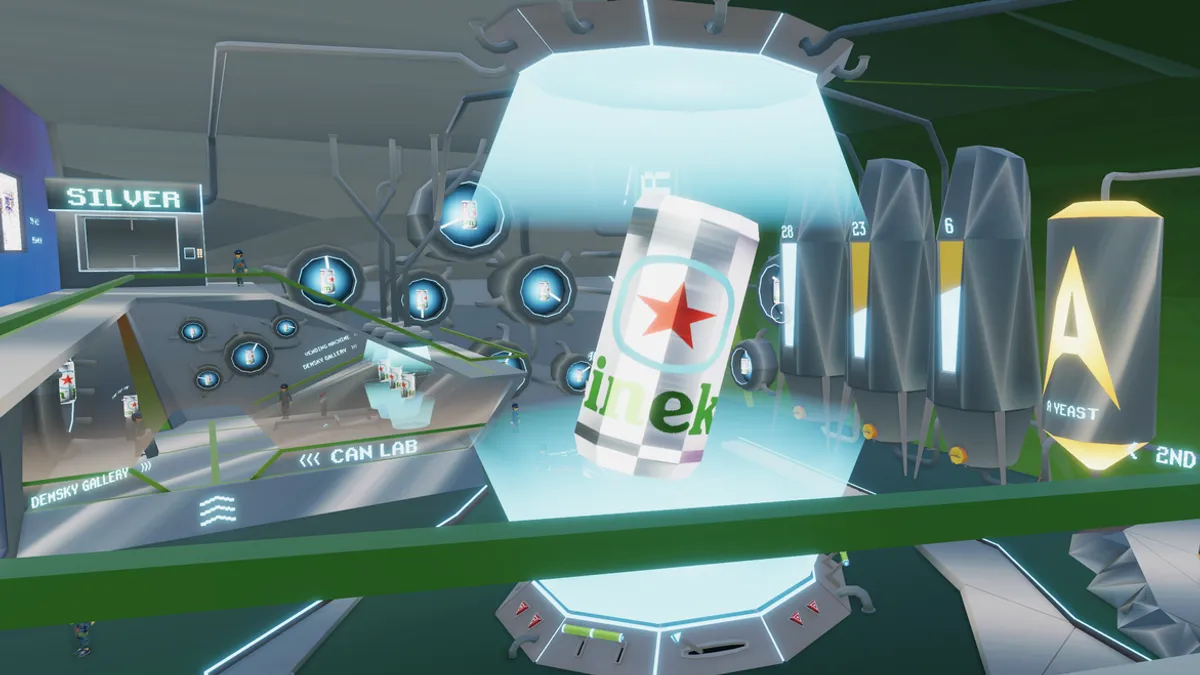NEW YORK — The future of sports marketing lies in enhancing the fan experience, said Frank Amorese, vice president of media partnerships and the Creative Studio at Heineken USA, during an Advertising Week panel on Monday.
Sports marketing has traditionally been focused on celebrating players. However, a recent trend has emerged emphasizing the fans. During the panel, “Fans Have More Friends: A Conversation on Sports Fandom,” which was moderated by “First Things First” co-host Chris Broussard, sports marketing experts discussed how in-person and virtual events are increasingly merging, giving brands an opportunity to actually enhance the fan experience and not simply remove friction from it. For Heineken, connecting fans with players is a key tactic in realizing that opportunity.
“How do we take the standard experience and make it even better? And direct access to players, fans… is an important one,” said Amorese.
Fostering connection
Heineken has long focused on brand experience and renewed its efforts in experiential marketing as COVID-19 restrictions loosen. One way the brand has combined the fan experience with the virtual world was by opening a Decentraland brewery that served “Heineken Silver.” The virtual brew could be “enjoyed” while learning about the brand and interacting with ambassadors like soccer coach and former player Thierry Henry.
When it comes to college football, the brand’s marketing has heavily focused on taking advantage of college football’s history of intense, sometimes decades-long rivalries to engage fans, per Amorese.
“At the end of the day… you can be friends 364 days a year, [but on game day], your archenemies,” joked Amorese in reference to friends who root for different college teams.
The panel discussion also touched on how to leverage emerging subcultures of fans. As viewing becomes more fragmented and sports fans increasingly turn to the internet to find connection, brands and platforms have searched for ways to leverage these emerging communities, evident in ESPN launching a creator network to appeal to Gen Zers and the rush to sports-themed non-fungible tokens (NFTs) despite a lagging market overall.
Fans, in general, tend to be more engaged with the world around them and are more open to receiving advertising messaging, according to panelist Ben Valenta, senior vice president of strategy and analytics at Fox Sports. Valenta is the co-author of a book, “Fans Have More Friends,” that evaluates the marketing power of sports fans.
“They're doing their research,” said Valenta. “They're going to be seen as the authority in their friend group and offer their recommendation. They just have more trust in brands.”
That passion is one reason brands look to create a personal connection with fans. The internet has enabled fan communities to become a driving force in sports marketing, and leveraging digital fan communities is likely to grow in importance as Web3 continues to evolve.
Digital technology has allowed for virtual and in-person worlds to meet. The possibilities of the metaverse and the expanding capabilities of NFTs give brands a whole new toolset, according to Melody Hildebrandt, president of Blockchain Creative Labs, Fox Entertainment’s Web3 media company. She pointed to the success of Fox Deportes’ Los Primeros NFT, the first NFT collection by a Spanish-language sports network in the U.S.
“You have skin in the game… [you] feel a little bit more like an owner,” said Hildebrandt about NFTs during the panel. “And I think it will unlock for brands…to really be able to have at scale... this ability to have more targeted recognition of these subgroups.”
These activations don’t solely have to be digital, according to Hildebrandt. NFTs can be used to gain access to special events or a conversation with an athlete. She pointed to Fox’s recently launched United States Football League, a football minor league that minted NFTs based on players. The tokens come with perks such as private video chats.
“Because it's all digital... you can actually do all these things at scale, and facilitate both real life and digital experiences that weren't really possible before,” said Hildebrandt.















